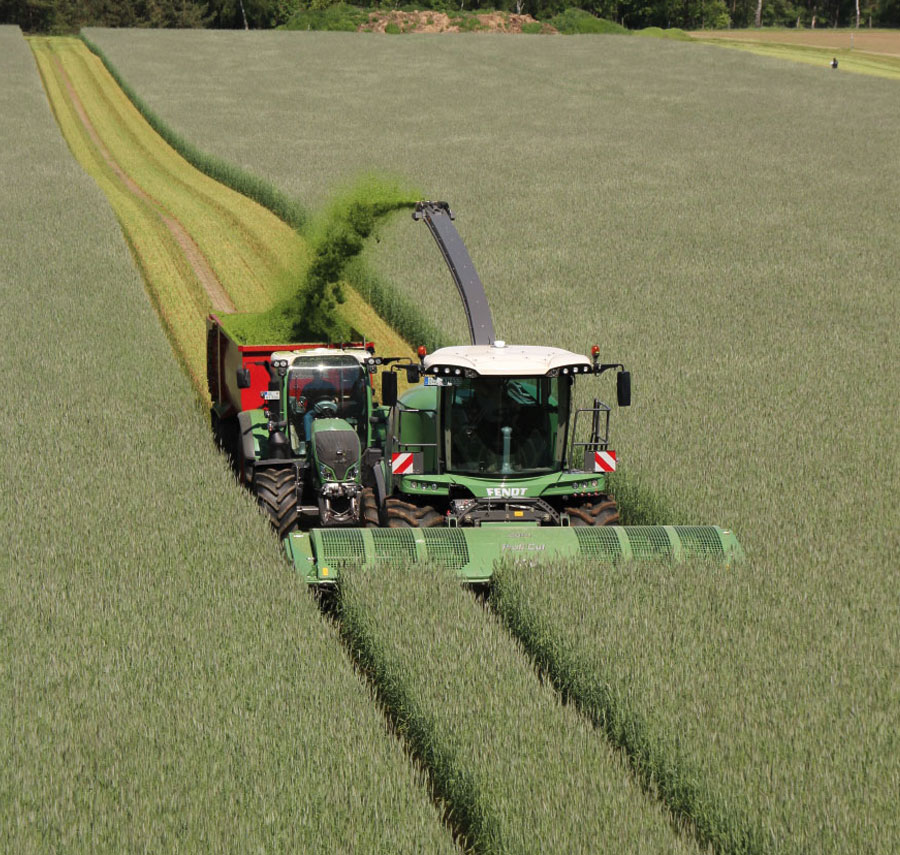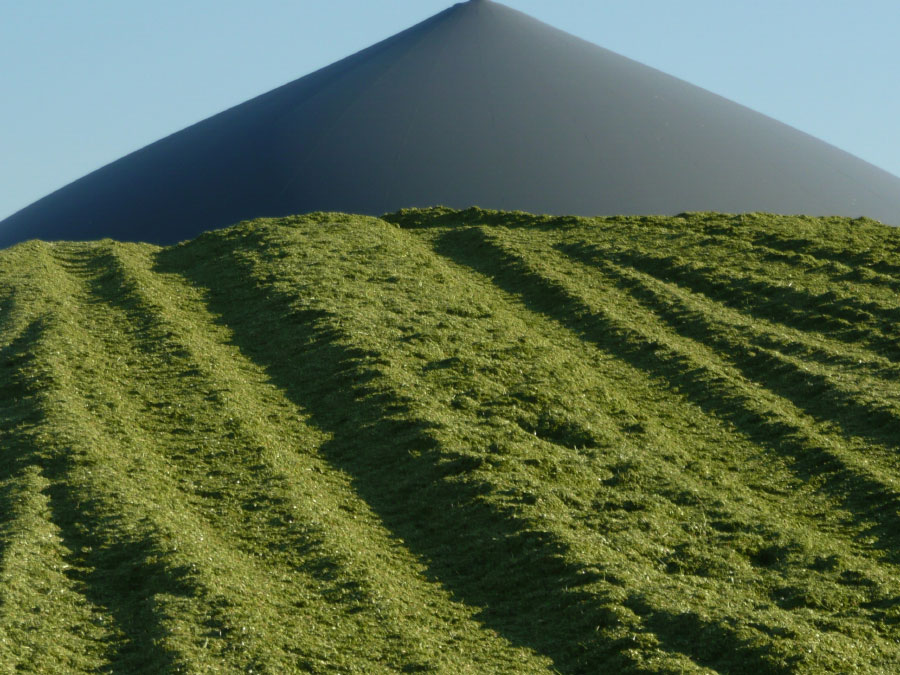Rye as wholecrop silage
Wholecrop silage can help to bridge supply shortages, to lengthen maize crop rotations and to improve yield security of maize grown on marginal sites. Especially hybrid rye is suitable for wholecrop silage due to its low site requirements and low production costs combined with a high yield potential.
1. Feeding
If a feed shortage is foreseeable the use of rye as wholecrop or for grain production can be decided on comparatively short-term. The so called dual-purpose hybrids are characterised by their high crop density, good tillering and good health as well as delayed senescence. For this purpose a variety like SU Performer is recommendable.
General recommendations on the proportion of wholecrop silage in feed rations depend on the energy content and can be up to 20 % for beef production, 10 kg DM/day for dairy cows and 20 % of DM uptake of beef cattle over 200 kg. Thus, it is essential to determine the nutritional value by analysis and not to rely on tabular values.
Latter often underestimate the energy content. In general wholecrop rye shows a lower energy content than wheat. This mainly derives from the unfavourable grain: straw ratio of rye. Therefore, wholecrop rye is mostly used for feeding early dry cows and big heifers. Commonly beef cattle and lactating cows need energy contents way over 6 MJ NEL/kg DM, which limits the use of wholecrop rye. Wholecrop rye can also be an alternative for bigger farms which introduce a third feeding group for late lactating cows.

Another possibility is to combine wholecrop silage with grass silage. Wholecrop silage delivers rumen available starch to the feed ration and a low (partly also negative) ruminalnitrogen balance (RNB) so that the very high RNB of grass silage can be decreased by wholecrop rye. The starch of the wholecrop rye delivers readily available energy to the rumen and the grass silage fast protein.
2. Bioenergy
Cereals and maize are well established in the bioenergy production and all cereals are suitable. Apart from using cereal grains for the bioenergy production using ensiled cereals is the most important form of use. There are some aspects which seem to make sense to using rye in particular. Rye has the lowest site requirements and at the same time the highest yield potential. A distinction is made between cultivation as a main crop (wholecrop rye silage) or as a catch crop (forage rye) following a preceding crop such as maize. Therefore, using hybrid rye for wholecrop silage is highly recommendable but as forage crop not profitable. As wholecrop rye is often grown on cooler and drier sites lower yields than forage maize are common practice.

Nevertheless, wholecrop rye silage pays off due to lower production costs. A slightly lower wholecrop rye silage methane yield compared to forage maize only has to be assumed if the crop is harvested too late and therefore has already been lignified. From an agronomical point of view, an early wholecrop hybrid rye harvest date is advisable, especially in regard to the subsequent crop. At the beginning of June there is still a wide range of subsequent crops possible. A later harvest date clearly limits the options.
